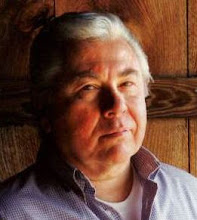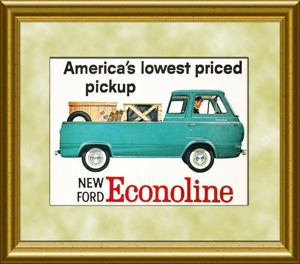
This is the candidate for the restoration project, a 1965 Ford Econoline 5-Window Pickup. In this photo, you will see mounting holes along the body's side for chrome trim that was included in the "Econoline Pickup Special" package that was made available in May and June of 1965. That package is commonly referred to as the "Spring Special."

I acquired this truck in December 2002 in nearly rust-free condition. The tailgate had the usual rust at the lower corners but the rest of the truck was free of perforations except for a few pinholes in the cab's floor. There were many small dents on the body as would be expected for its age. The largest dent was next to the right headlight bezel.

The Vehicle Warranty Plate is affixed to the driver's side door. In the case of this truck the V.I.N. on the plate matches the V.I.N. on the floor of the vehicle. That is a good sign that the vehicle has the original driver's side door.
The COLOR "W" on the Warranty Plate signifies that the vehicle was originally Medium Blue. That color is clearly visible in the photos of the interior and also in the photo of the front of the vehicle where the headlights were removed.

Notice in this photo how the dashboard had been cut to accept an aftermarket radio. The stock radio was a manually-tuned AM radio with a removable faceplate which housed the dial and knobs. There were only three small round holes in the dashboard for the original radio installation.

The engine is not the original 170 CID engine but instead it is a 200 CID engine from a 1966 Ford Falcon. The head is from a 1967 Falcon.

Since this restoration is not going to be a "Concours" entrant, I am going to use this engine in the truck after it is rebuilt.

This photo shows the engine still on the crane just before it is mounted on the engine stand to be disassembled.

After the engine was removed and disassembled, the block, head and crankshaft were taken to a machine shop for total restoration. All of the small parts were packed in boxes and marked with the contents. The small fasteners, nuts, bolts and screws were put into zip-lock bags and marked with the contents.




